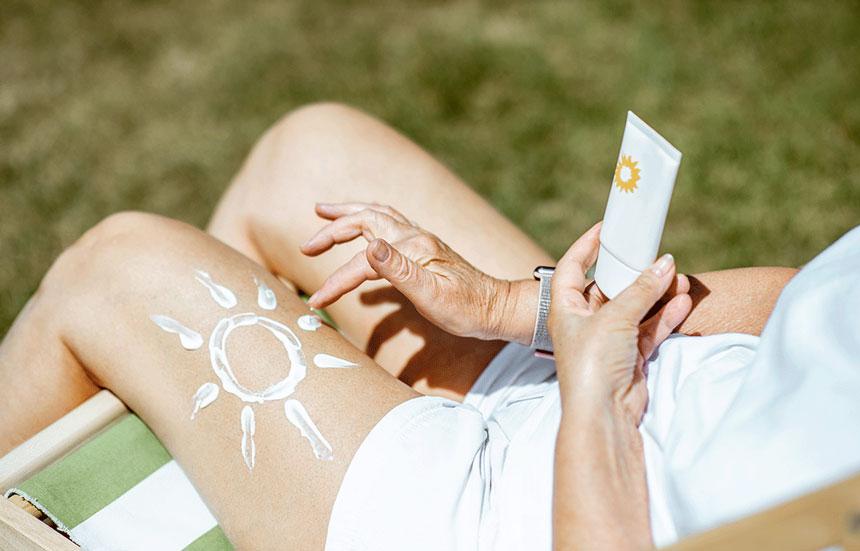How Much Time Should I Spend in the Sun?

When you think of summer, do you picture vacations, barbecues, outdoor fun and sunshine? I know I do.
Sunshine, in particular, has many benefits for our physical and mental health. Among other things, the sun enables our bodies to produce vitamin D (which improves the strength and overall health of our bones and helps our immune system fight off infections) and promotes good mental health by naturally boosting serotonin levels. For humans, the sun is a crucial part of maintaining our health and wellness.
Alas, sunshine doesn’t always bring us joy. It can also cause serious pain and negativity, which ranges from the relatively mild (wrinkles, skin discoloration) to the potentially deadly (namely: melanoma).
When I was a practicing MDVIP physician, my patients had many questions about sun safety: Should I take Vitamin D supplements? If I’m at risk for melanoma, does that mean I have to avoid the sun at all costs? Do I really need sunscreen if I have darker skin and have never had a sunburn? What kind of sunscreen should I wear and how often should I reapply?
The sun poses a conundrum: How do we get enough sunshine to stay healthy while also minimizing the risk of UV damage and skin cancers? It’s confusing, but here are five essential tips for maximizing the benefits of sunshine while minimizing the risks.
1. SPF, SPF, SPF!
Anytime you’re in the sun (including driving or riding in a car). the CDC recommends wearing broad spectrum sunscreen that is SPF 15 or higher. Apply sunscreen on all exposed body parts. Sunscreen should be applied 15 minutes before going outside, and it needs to be reapplied every two hours or sooner if you’re swimming or sweating profusely. Sunscreen remains effective for up to three years, so check the label to make sure what you’re using is not expired.
2. Stick to the shade between 10 a.m. and 2 p.m.
The sun’s rays are strongest for four hours each day, between 10 a.m. and 2 p.m. Sticking to the shade or staying inside during that time will reduce your sun exposure. If you are a fan of hikes, outdoor walks, picnics or any other outdoor activity, try to plan these activities for the early morning, late afternoon or early evening.
3. Clothing: SPF clothes, hats, sunglasses
Sunscreen offers significant protection from the sun, but it does not completely shield you. It also works best when paired with other sun protection methods, like a wide-brimmed hat, sunglasses and long sleeves or pants. You can even invest in clothing that is specifically designed to protect you from the sun. Look for clothes with a high Ultraviolet Protection Factor (UPF), which is the clothing version of SPF.
4. Know your melanoma risk
Melanoma can strike anyone of any age, race, ethnicity or gender. So we should all take care to protect our skin and be aware of the warning signs. But there are certain factors that raise your risk of developing this skin cancer, so you should be especially vigilant if you have multiple risk factors, like a large number of moles, pale skin, blue eyes or a history of severe, blistering sunburns.
Find out your personal risk using the National Cancer Institute’s Melanoma Risk Assessment Tool. If you have moles, perform regular mole checks to look for the ABCDEs of melanoma: Asymmetry, irregular Borders, multiple Colors or uneven color distribution, Diameter greater than6mm, and moles that Evolve in appearance over time. If you find one of the ABCDEs in a mole, send a photo to your doctor and schedule an appointment for the mole to be evaluated.
5. Get your Vitamin D from the sun when possible
Remember how we talked about all the lovely benefits of the sun at the beginning of this newsletter? Avoiding the sun entirely will rob you of crucial health benefits like strengthened bones and improved mood. Experts now recommend you get about 10-15 minutes of daily sun exposure directly on your skin. Multiple studies have found that vitamin D supplements are less effective than getting Vitamin D from sunshine. Check out this recent Atlantic article that goes into detail about Vitamin D and explains why it is beneficial to get a little sun every day.
This recommendation is not one size fits all. There are many conditions that make it inadvisable to get that much sun exposure, such as being at high risk for melanoma, having pale skin that burns easily or being on certain medications that make you more photosensitive. Check with your doctor to determine the amount of sun exposure that is safe for you.
Still have questions? Reach out to your MDVIP-affiliated physician! If you have a lot of questions or are concerned about a mole that doesn't look right, schedule an appointment with your doc. (Seriously, go make an appointment right now! I’ll wait.)


